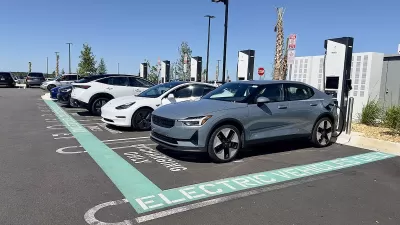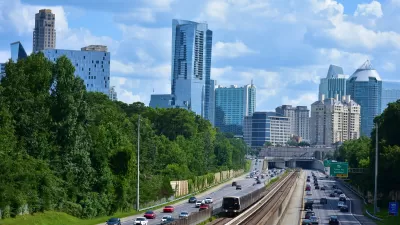Last week, transportation Secretary Mary E. Peters announced that the Highway Trust Fund will be empty by Oct. 1st. This editorial considers two possible options to fund transportation.
"Though the $8 billion patch (approved by the House on 9/11) will add to the national debt, we're relieved that the Bush administration withdrew its shortsighted plan to transfer money from the mass transit account. Still, the bailout is a temporary remedy that will keep the fund afloat for a year at most if projections hold. Congress needs to search for new sources of transportation funding or risk a similar crisis next fall.
Raising a federal gasoline tax that hasn't increased since 1993 and that has lost much of its power to inflation would be a good first step."
Additionally, "Congress must take a fresh approach; it can start by looking to Oregon, where a recent pilot program proved that charging commuters for the miles they drive instead of the gas they purchase can be successful."
"Unfortunately, neither Barack Obama nor John McCain has made transportation a priority or spelled out in any detail how to pay for it.
Though their plans don't inspire confidence, we hope that the candidates learned from the Highway Trust Fund's near-collapse. The next administration must work with Congress to find sustainable, environmentally logical sources of transportation funding."
FULL STORY: Editorial: Paying for Roads

Planetizen Federal Action Tracker
A weekly monitor of how Trump’s orders and actions are impacting planners and planning in America.

Chicago’s Ghost Rails
Just beneath the surface of the modern city lie the remnants of its expansive early 20th-century streetcar system.

San Antonio and Austin are Fusing Into one Massive Megaregion
The region spanning the two central Texas cities is growing fast, posing challenges for local infrastructure and water supplies.

Since Zion's Shuttles Went Electric “The Smog is Gone”
Visitors to Zion National Park can enjoy the canyon via the nation’s first fully electric park shuttle system.

Trump Distributing DOT Safety Funds at 1/10 Rate of Biden
Funds for Safe Streets and other transportation safety and equity programs are being held up by administrative reviews and conflicts with the Trump administration’s priorities.

German Cities Subsidize Taxis for Women Amid Wave of Violence
Free or low-cost taxi rides can help women navigate cities more safely, but critics say the programs don't address the root causes of violence against women.
Urban Design for Planners 1: Software Tools
This six-course series explores essential urban design concepts using open source software and equips planners with the tools they need to participate fully in the urban design process.
Planning for Universal Design
Learn the tools for implementing Universal Design in planning regulations.
planning NEXT
Appalachian Highlands Housing Partners
Mpact (founded as Rail~Volution)
City of Camden Redevelopment Agency
City of Astoria
City of Portland
City of Laramie





























